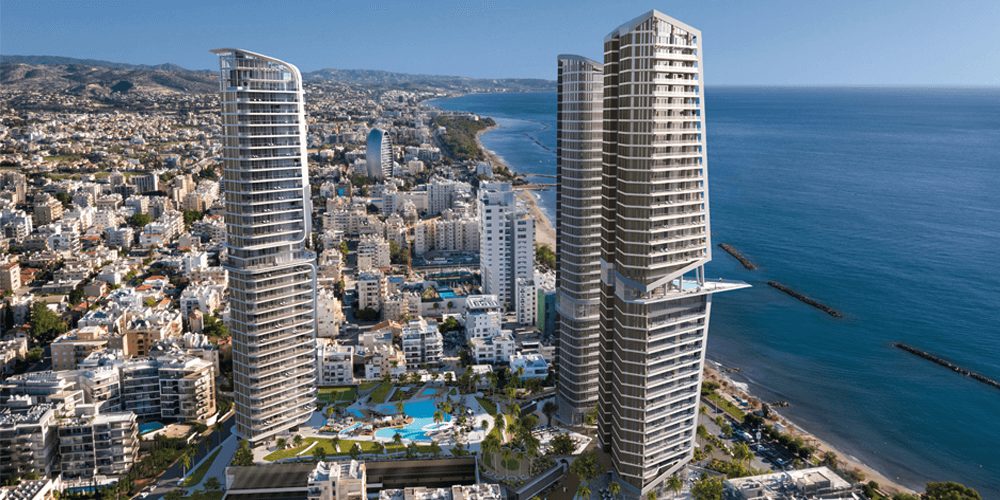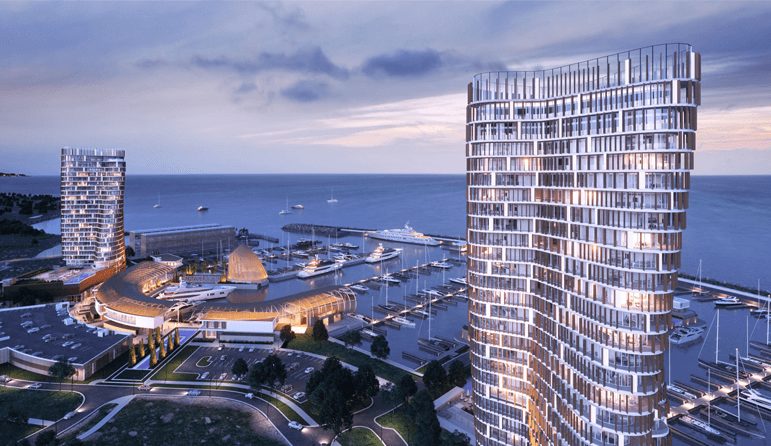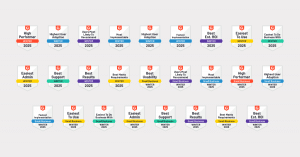Cypriot civil engineering consultants, A. J. Pericleous, are involved in most of the high-rise and commercial residential projects currently being carried out in Cyprus. Pretty darn cool, we agree. Yiannis Pericleous is the company’s charismatic and clever design manager and partner. We were delighted to chat to him about how their team is coping with COVID and keeping their cool.
“Our core business is structural, geotechnical and civil” says Yiannis, “we are one of the largest engineering practices on the island. The number might be funny compared to Australian or UK companies, but we are a team of 16 — 14 engineers, one BIM technician and one accountant — that is a huge number for Cyprus.”
We didn’t know it was possible to actually hear a warm smile in someone’s voice (sans video) but at this point, Yiannis shows us you can. Champion.
THE BEGINNING OF THE BREAKOUT
A. J. Pericleous began their response to the pandemic breakout early, encouraging anyone with compromised health to work from home from March 10. “From the 23rd of March onwards, everybody went home” says Yiannis.
Yiannis points to the consultancy’s technical framework as the reason they could make the shift to working from home relatively easily. “Luckily the fact that we had IT infrastructure which helped us communicate outside of the office, helped us — all we had to do was to pay for higher internet speed” he says.
“We have Microsoft Teams, we have GoTo Meetings, we have Synergy — all construction sites in Cyprus closed on the 24th of March, so since we couldn’t go for site inspections and supervision, we had to catch up with projects that were behind, or complete other design projects — and these systems allowed us to do that remotely.”
COVID’S ECONOMIC IMPACT ON CYPRUS
Yiannis says, “The construction economy of Cyprus is based on an investment scheme that the government announced when we had the financial crisis of 2013. These investors are from abroad, and many bought property on the island to benefit from this scheme. Since coronavirus, with the construction sites closed, some projects that we had in the pipeline have been postponed or canceled due to the risk of having less sales” — the most common cry from our sector worldwide.
“Luckily,” says Yiannis, “our company is involved in major projects, so these projects cannot stop. When construction sites resume again then we will start working. But the economy has been seriously affected, as it has in every country, so I don’t know what the future will be in terms of new projects.” And then, in what we come to learn is a typical Yiannis fashion, “But we stay positive”. Again, champion.
Immigrant workers are another integral part of the built environment industry in Cyprus. “Things here are also difficult because many of the skilled technicians on construction sites are from abroad. These technicians were repatriated during the investment period I mentioned — so how are they going to come back? It will be very difficult for large construction sites. Even if they are going to start again, like the projects we have; it will be very, very difficult to get back to the pace they had before the crisis.”

THE IMPERATIVE OF MONITORING
B.C. (before COVID), it was A. J. Pericleous’ rapid expansion that drove their need to find a comprehensive business and practice management software. “Our growth over the last five years since the 2013 financial crisis made it imperative to monitor costs and the profitability of each project” says Yiannis.
“We used to use spreadsheets to complete timesheets, but eventually they were useless, except for paying people (checking hours). It was impossible, through spreadsheets, to check the profitability of the project or if there was any extra work that had to be billed. So, we started utilizing Synergy, on a test basis, during December 2019. We officially implemented Synergy in our daily operations in January 2020.”
The inevitable contraction associated with the COVID-19 pandemic brought their initial reasons for implementing Synergy into an even sharper focus. “Because we had this disruption in the projects that we had in the pipeline, we had to become extremely cost cautious” says Yiannis. “Things that, under normal conditions, may not have been billed to the client — things we wouldn’t usually charge the client for — we now have to account for. We have to charge for everything. Everyone does, at this point. And Synergy is something that is helping us with this.”
THE IMPLEMENTATION OPPORTUNITY OF ISOLATION
Yiannis admits that it’s been a steep learning curve for A. J. Pericleous since January. “Because everybody in the team had the impression that Synergy was just a cloud timesheet software that Yiannis asked them to implement — they didn’t realize the benefits that this software can bring to us. So, during the COVID period, we had a webinar with Synergy, and I asked some of my more experienced people to attend, so they started understanding the merits of the platform.
“Also, during this period, I have had more time to organize the projects that were already in Synergy, which means I was able to track work that had not been billed to the clients — which is extremely important. If we were still using spreadsheets we would have lost money.
“Also, because we have this very accurate record, we are able to bill extra work at an hourly rate, so it is much more difficult for the client to dispute the hours that we have recorded in our system — and this happened twice this month! Customers asked for an analysis of the hourly rates that we billed — it was easy for me to send it. I just ran a report on that item.
“It was extremely useful in that way, but we used this period to better learn how this platform works and what benefits it can bring to our operation.”

YIANNIS’S BUILT ENVIRONMENT BIZ TIPS FOR CARRYING ON DURING COVID
Central to A. J. Pericleous’ successful survival during coronavirus, are careful monitoring of finances, and unification of the team in realizing the company’s cashflow objectives. And that’s what Yiannis says he’d pass on to other built environment businesses.
“The tip is that efficiency must be improved so that costs remain as low as possible, and everybody has to be very cost cautious. And Synergy is a tool that can help you in that direction.”
WHY SYNERGY, WHY NOW
According to Yiannis (and also to us!) industry specificity is king when it comes to business software solutions. “Because I have a business administration degree as well as engineering, it was always very important to me to monitor the cost of projects. I kept wondering what a good tool would be to monitor costs — okay, I could monitor the overall economics of the company through QuickBooks, let’s say, but knowing the profitability and performance of each project is also very important. This cannot be done through an accounting software.”
“I was evaluating Synergy and another similar platform, which a competitor is using. But the really great thing about Synergy is that it is developed by engineers and architects for engineers and architects. I mean, there was very little I had to set up. Even the design templates were there. Okay, I had to adjust it to become more suitable for Cyprus standards and the design stages we have here, but the basis to work was there. Ready to go.”
It’s no secret that the secret to our success is having the world’s best customers — Yiannis, and A. J. Pericleous, are a perfect example of that fact. Hopefully their warmth and wisdom can radiate into the reckoning of your built environment business. Champion to champion.



